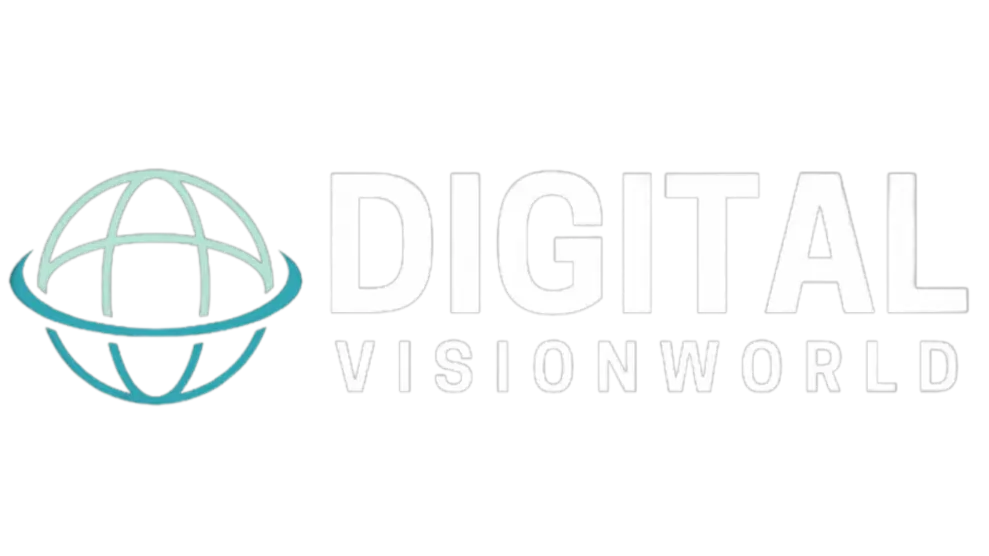Outdated Technologies: The Exnovation Challenge in Business Transformation and Sustainability

1. Introduction: The Growing Problem of Outdated Technologies
As industries continue to embrace digital transformation, outdated technologies pose a significant challenge to business sustainability, efficiency, and security. Many organizations continue to operate with legacy systems that are no longer efficient, secure, or sustainable. The process of exnovation, phasing out obsolete technologies, has become critical to ensuring businesses remain competitive and aligned with modern corporate sustainability strategies.
A study by Harvard Business Review (2022) found that 68% of businesses struggle with outdated systems that slow productivity and increase operational costs. The issue is not only about technology but also about business transformation, sustainability, and long-term economic viability.
In this blog, we explore:
- The risks of outdated technologies in modern industries.
- The role of technology and sustainability in corporate decision-making.
- The importance of exnovation in business transformation and corporate sustainability.
- Strategies for phasing out legacy systems and adopting modern, sustainable solutions.
2. The Hidden Costs and Risks of Outdated Technologies
Despite advancements in modern computing, many companies continue to rely on obsolete systems due to cost concerns, resistance to change, and lack of technical expertise. However, outdated technologies come with significant risks that outweigh the short-term savings of maintaining them.
2.1 Reduced Efficiency and Higher Operational Costs
Legacy systems often require manual intervention, lack automation capabilities, and fail to integrate with modern technologies. According to MIT Sloan Management Review (2021), companies using outdated technology spend up to 75% more on operational costs than those that have transitioned to newer systems.
Additionally, older hardware and software require expensive maintenance. Research from Gartner (2022) indicates that maintaining legacy IT infrastructure costs companies an average of $4,500 per employee annually, money that could be allocated toward innovation and business transformation.
2.2 Security Vulnerabilities and Data Breach Risks
Cybersecurity threats have escalated in recent years, yet outdated technologies remain the weakest link in enterprise security. According to IBM Security (2023), 60% of cyberattacks exploit vulnerabilities in outdated systems that no longer receive updates.
For example:
- In 2017, the WannaCry ransomware attack exploited vulnerabilities in Microsoft’s outdated Windows XP system, affecting over 200,000 computers in 150 countries (Symantec, 2018).
- The Equifax data breach (2017)was due to an outdated security patch, exposing sensitive data of 147 million individuals (Ponemon Institute, 2019).
Organizations failing to replace legacy systems risk severe financial penalties, legal consequences, and reputational damage.
2.3 Lack of Compliance with Industry Regulations
Government regulations and industry standards continuously evolve to enforce data protection, environmental sustainability, and cybersecurity. Outdated technologies often fail to meet compliance requirements such as:
- GDPR (General Data Protection Regulation) in the EU.
- ISO 27001 for information security management.
- Corporate sustainability goals (ESG reporting).
Failure to comply with these standards exposes businesses to lawsuits, fines, and loss of customer trust (Harvard Law Review, 2023).
3. The Role of Technology and Sustainability in Business Transformation

3.1 Defining Sustainable Technology
Sustainable technology refers to digital and hardware solutions designed to minimize environmental impact, optimize energy consumption, and reduce e-waste. The United Nations’ Sustainable Development Goals (SDGs) emphasize clean energy, responsible consumption, and digital innovation as key to future business success.
According to McKinsey & Company (2022), businesses integrating sustainable technology witness:
- 30% reduction in operational costs.
- 40% higher employee productivity due to improved workflow efficiency.
- Increased customer trust and brand reputation.
3.2 Exnovation as a Sustainable Business Strategy
Exnovation, or the strategic removal of outdated technology, is necessary for sustainability-driven businesses. Companies that embrace exnovation governance see long-term benefits, including:
- Lower carbon footprints by reducing reliance on high-energy-consuming legacy systems.
- Higher regulatory compliance, avoiding penalties related to sustainability and security breaches.
- Enhanced innovation potential, as resources are reallocated to emerging technologies.
3.3 Industry Examples of Sustainable Exnovation
Several industries are leading the way in sustainable business transformation through exnovation:
- Automotive Industry: The transition from gasoline vehicles to electric vehicles (EVs) led by Tesla, General Motors, and Ford.
- IT and Cloud Computing: Companies like Google and Microsoft shifting from traditional on-premise servers to energy-efficient, carbon-neutral cloud data centers.
- Retail and Packaging: IKEA replacing single-use plastics with 100% renewable materials.
4. Business Transformation and Exnovation Strategies
4.1 Implementing Corporate Sustainability Strategies
For companies aiming to phase out outdated technologies, corporate sustainability strategies must include:
- Technology Audit: Assessing existing systems to identify inefficiencies.
- Investing in Cloud & AI Solutions: Transitioning to automated, AI-powered business models.
- Training & Change Management: Upskilling employees to adapt to new sustainable technologies.
- Implementing Circular Economy Models: Repurposing old technology rather than discarding it.
4.2 Overcoming Barriers to Exnovation
One of the biggest exnovation challenges is resistance to change. Companies must:
- Develop strong change management frameworks such as Kotter’s 8-Step Model (Harvard Business School, 2021).
- Provide financial incentives for departments to embrace technological upgrades.
- Ensure leadership buy-in, aligning exnovation with business objectives.
5. Case Studies: Businesses Leading Exnovation in Legacy System Transition
5.1 General Motors (GM): The Auto Industry’s Digital Shift
General Motors (GM) announced plans to phase out gasoline-powered vehicles by 2035, investing heavily in EV production and sustainable materials. This strategic exnovation aligns with:
- Global carbon reduction targets.
- Consumer demand for sustainable transportation.
5.2 Microsoft: Carbon-Negative Cloud Strategy
Microsoft committed to becoming carbon-negative by 2030 by:
- Retiring on-premise data centers in favor of renewable energy-powered cloud infrastructure.
- Investing $1 billion in carbon reduction and AI-driven sustainability projects.
5.3 IKEA: Sustainable Supply Chain Exnovation
IKEA successfully removed plastic packaging, transitioning to biodegradable, renewable materials. This move:
- Reduced global plastic waste by 50 million tons per year.
- Increased brand loyalty and sustainability rankings.
6. Conclusion: Future-Proofing Businesses Through Exnovation

The transition away from outdated technologies is no longer an option, it is a necessity for businesses striving to maintain efficiency, security, and sustainability. In today’s rapidly evolving digital landscape, companies that fail to adapt risk falling behind competitors who embrace business transformation and exnovation as a strategic advantage. The economic, security, and environmental consequences of outdated technologies highlight the urgency of this transition.
6.1 Why Exnovation is a Business Imperative
Companies often hesitate to phase out legacy systems due to high replacement costs, employee training challenges, and temporary workflow disruptions. However, the cost of maintaining outdated technology far outweighs the investment required for modernization. Businesses that proactively implement exnovation strategies benefit from:
- Operational Efficiency – Modern systems streamline workflows, improve automation, and reduce manual inefficiencies.
- Cybersecurity Resilience – Eliminating outdated systems mitigates risks from cyber threats, data breaches, and regulatory penalties.
- Regulatory Compliance – Compliance with industry standards like GDPR, ISO 27001, and ESG enhances legal and ethical business standing.
- Cost Reduction – Investing in cloud computing, AI, and automation reduces long-term operational and maintenance expenses.
- Sustainability and Corporate Responsibility – Phasing out high-energy-consuming legacy systems aligns with corporate sustainability strategies and environmental regulations.
6.2 The Strategic Role of Exnovation in Sustainability
As businesses increasingly commit to sustainable technology and green initiatives, exnovation must be incorporated into their corporate sustainability strategies. This shift is already evident in industries such as:
- Energy: Transitioning from coal and fossil fuels to renewable energy sources.
- Automotive: Phasing out gasoline vehicles in favour of electric mobility solutions.
- Technology & IT: Replacing outdated on-premise data centers with carbon-neutral cloud solutions.
- Manufacturing: Moving towards circular economy models that promote waste reduction and resource efficiency.
Companies that embrace exnovation not only future-proof their operations but also contribute to a larger, global movement toward sustainability. By integrating sustainable practices, they strengthen their brand reputation, attract environmentally conscious investors, and meet evolving consumer expectations.
6.3 Overcoming Resistance to Change: A Roadmap for Exnovation
One of the biggest obstacles to exnovation is organizational resistance to change. Employees, leadership, and stakeholders may be hesitant due to uncertainty, fear of job displacement, and short-term financial concerns. However, with a well-structured business transformation strategy, companies can minimize disruptions and maximize success.
Steps to Implement a Smooth Exnovation Process:
- Technology Audit – Identify outdated technologies and assess their impact on business operations.
- Strategic Planning – Develop an exnovation roadmap aligned with corporate goals.
- Stakeholder Engagement – Involve employees, IT teams, and investors in decision-making.
- Gradual Transition – Implement changes in phases to ensure smooth adaptation.
- Employee Training & Upskilling – Equip staff with new technical skills to work with upgraded systems.
- Continuous Monitoring & Improvement – Regularly assess the effectiveness of exnovation strategies.
6.4 The Future of Business Transformation: Adaptability and Innovation
The ability to phase out outdated systems and embrace new technologies will define business success in the coming decades. As industries become more data-driven, automated, and sustainability-focused, companies must cultivate a culture of adaptability and continuous learning.
Key trends shaping the future of business transformation include:
- AI-Driven Decision Making – Automating processes to enhance efficiency and accuracy.
- Blockchain for Security & Transparency – Protecting data integrity and improving compliance.
- Green Computing & Carbon-Neutral Tech – Reducing environmental impact through energy-efficient solutions.
- Decentralized Cloud Computing – Enhancing scalability and reducing IT infrastructure costs.
6.5 Final Thoughts: Exnovation as the Key to Sustainable Business Growth
Businesses that refuse to part ways with outdated technologies are not just slowing themselves down, they are actively hindering their potential for innovation, security, and sustainability. Exnovation is not merely about eliminating old systems; it is about creating space for future-forward solutions that drive business success.
In summary, outdated technologies should not be seen as assets but as liabilities. Companies that take proactive measures to implement structured exnovation strategies will not only gain a competitive edge but also contribute to a more resilient, sustainable, and technologically advanced future.
By embracing exnovation today, businesses can secure their place in the digital economy, meet evolving sustainability goals, and ensure long-term operational efficiency. The time for change is now!
7. References
- Harvard Business Review. (2022). The Hidden Costs of Legacy Systems.
- MIT Sloan Management Review. (2021). Digital Transformation and Business Sustainability.
- IBM Security. (2023). Data Breaches Linked to Outdated Systems.
- McKinsey & Company. (2022). Sustainable Business Strategies in the Digital Age.
- Harvard Law Review. (2023). Regulatory Compliance for Legacy Systems.
